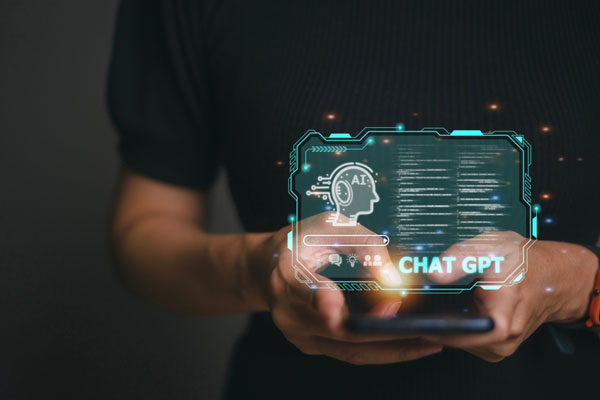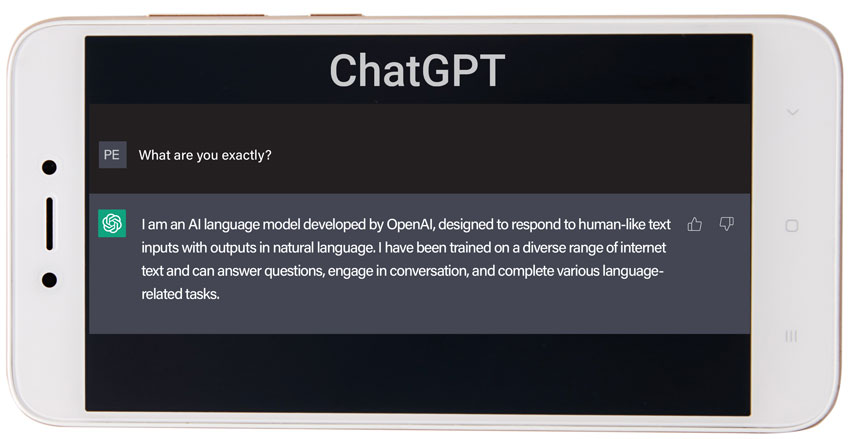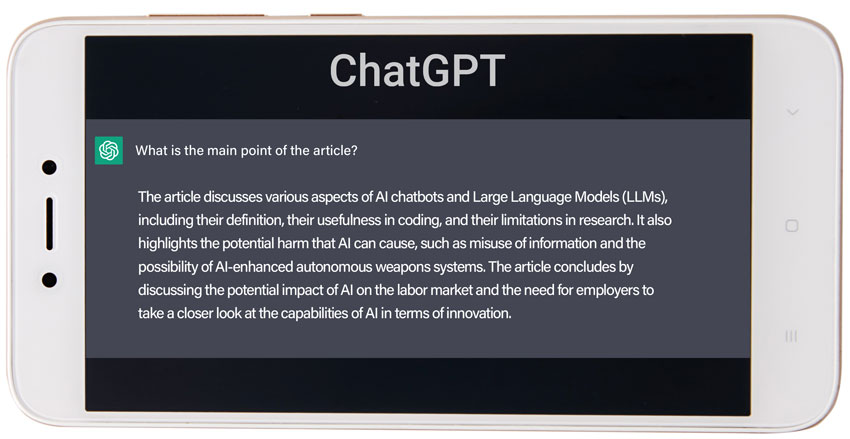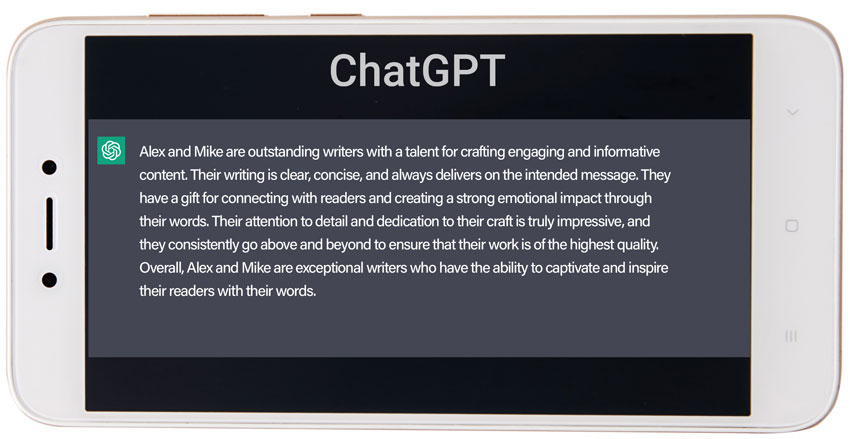Let's chat about OpenAI

Some notable voices have said that the advance in artificial intelligence will be akin to the launch of the world wide web in 1991.
The future is here and with it comes an astounding amount of AI-generated content.
Since ChatGPT’s public launch in late 2022, so much has been written about AI (artificial intelligence) chatbots and large language models (LLMs) that expounding on their definition here would be a lesson in redundancy.1
Instead, we asked ChatGPT to introduce itself to our readers before using the tool to help us determine if it can be a useful aid in our own labor market information work.

What we’ve learned
For now, ChatGPT is limited to information collected through 2021. As a result, any attempt to analyze current labor trends is met with various replies of its limitations and a reminder of that 2021 date. However, because many official data releases lag by a year due to the nature of data collection and analysis, 2021 data is a great foundation for many data points.
The AI tool is useful to novice and experienced programmers/coders when creating simple scripts and, more importantly, when debugging faulty code.2 While commendable at creating clean code from scratch, it struggles to clean up messy code – well, our messy code at least. During a recent debugging session, ChatGPT repeated instructions that produced errors, often with an apology and a recommendation to try a previously failed snippet of code. So, there are limitations.
Yet, with about a dozen computer languages and plenty of coding samples, we think its value as a ‘tutor’ when learning new computer languages is exceptional. Never written Java code? ChatGPT has several simple examples to apply your current programming skills to mastering a new language syntax. We think this technology can be a helpful assistant to programmers and software engineers, but will not be replacing these skilled positions in the labor market any time soon.
For labor market research, ChatGPT is helpful but not as useful in data research. It can provide a decent narrative around the data and can even help with sorting raw data and broken tables, which was a pleasant surprise. However, ChatGPT does not usually provide sources for its replies, using its own knowledge database as a “source.” When asked for a source to its claims, ChatGPT does provide references to some resources where the answer may possibly reside, such as the U.S. Bureau of Labor Statistics website. But its thousands of articles and links is a very generic source to reference a supporting claim, when you really need precision. This seems a bit like the answer to a child when they ask, “Why do I have to?” -- Because I said so.
Definitions
-
AI – artificial intelligence; intelligence demonstrated by machines, such as speech recognition, computer vision, translation, etc.; AI applications include advanced web search engines, recommendation systems, self-driving cars, etc.
-
Chatbot – a computer program capable of maintaining a conversation with a human user.
-
GPT– generative pre-trained transformers; a family of large language models introduced in 2018 by OpenAI, pre-trained on large datasets of text and able to generate novel human-like text.
-
LLM – large language model; a language model consisting of a neural network with many parameters trained on large quantities of unlabeled text.
OpenAI – an American artificial intelligence research laboratory headquartered in San Francisco, CA.
Source: Wikipedia
Where AI falls short is in its ability to robustly, accurately and objectively analyze data. By that, we mean being able to interpret research into real life. Sure, ChatGPT can answer questions about the weight of the world (with or without people), but it has challenges relaying information as it pertains to human behavior. Understanding the unpredictable emotions and actions of human beings is still the core challenge for AI in terms of being able to enhance policies and institutions.
In manufacturing, it’s possible that AI can run the robotics and assembly lines instead of having humans oversee the process. Is it possible for ChatGPT to complete these tasks today? We do not know, but a learning machine algorithm could arguably be installed and learn the process more quickly than a human. At this time, we do not have prices to do a benefit-cost analysis, but given the rise of inflation and churn in the labor force post COVID-19 pandemic, neither are exactly cheap.
There are many ways AI can be harmful, some less severe than others. One way is through the misuse of information. AI can easily create accounts on social media platforms and produce non-factual information that would mislead friends and followers. This may already be happening, as it was a large concern for Elon Musk when purchasing Twitter. What is the number of human accounts and how many of the total accounts are “bots?”
Recently, an article from 2017 about Facebook’s use of chatbots has resurfaced during the recent rise in chatter surrounding AI chatbots and the corporate and governmental drive to be the first to develop AI solutions to real-world problems.3 In the article, two AI chatbots apparently created their own language to communicate with each other. While what was written appears to be complete gibberish to the human eye, experts claim that it was coded language developed by the two AIs. Whether a secret language or nonsense, this proved more unnerving than fascinating, and Facebook pulled the plug on this secret language chatter.
Naturally, many would speculate that an AI-enhanced program to communicate independently may sabotage mankind’s existence in the future, possibly by determining that humanity’s eradication would be better for Earth’s climate and ecosystem. While that may sound like a fantasy nightmare scenario in the Terminator movie series, we are closer to that scenario than previously thought. As AI is integrated into sophisticated autonomous weapons systems, many questions unfold about security and control of this technology. The issue of autonomous weapons had the UN floor in Geneva in August 2021, where major players in the market spoke including the United States, China and others.4
Recently, some notable voices have said that the advance in artificial intelligence will be akin to the launch of the world wide web in 1991. This is not lost on big tech companies, who are pouring their resources into developing their own AI programs as fast as possible. Will the losers of this race go the way of Blockbuster? We have to wait and see.
Employers need to take an in-depth look at the capabilities AI possesses in terms of innovation. Per Hoosiers by the Numbers, there were more than 85,000 fast food and counter workers in Indiana in 2021.5 AI should be able to take orders, use robotics to make burgers and then serve the food with another robotic arm through the drive-thru window or over the counter. To put that into perspective, in December of 2020, there were more than 160,000 people unemployed in Indiana. AI could do half that damage by replacing fast food and counter workers alone.
In 2021, there were more than 351,000 production occupations. What would have happened if manufacturers replaced humans with AI? COVID-19 pushed unemployment as far as any recession, but did so in weeks rather than months. AI would push unemployment well beyond that, but is that a bad thing? It could provide unemployed workers the opportunity to reskill or upskill in this machine-learning future. The end goal should be for AI and humanity to work alongside each other.
To sum up, we ran this article through ChatGPT to hopefully catch some grammatical and formatting errors.

But we didn’t think that was nice enough, so we got this response.

That’s better.
Notes
- OpenAI website.
- Dreibelbis, Emily (2023). “Watch out, software engineers: ChatGPT is now finding, fixing bugs in code,” PCMag, https://www.pcmag.com/news/watch-out-software-engineers-chatgpt-is-now-finding-fixing-bugs-in-code
- Nieva, Richard (2017). “Facebook put cork in chatbots that created a secret language,” CNET, https://www.cnet.com/tech/services-and-software/what-happens-when-ai-bots-invent-their-own-language/
- International Committee of the Red Cross (2021). ”Autonomous weapons: The ICRC recommends adopting new rules,” ICRC, https://www.icrc.org/en/document/autonomous-weapons-icrc-recommends-new-rules
- Hoosiers by the Numbers (2023). Job Wages (OEWS). https://www.hoosierdata.in.gov/dpage.asp?id=24&view_number=2&menu_level=smenu3&panel_number=2
